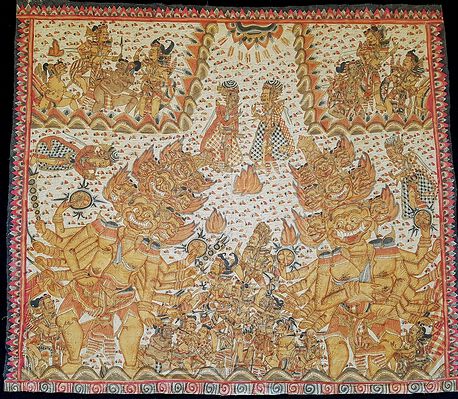Salia and Aswatama
Bharatayuddha: Salia and Aswatama
Towards the end of the Bharatayuddha, after the death of Karna, Aswatama, the son of Drona (who has already been killed), accuses Salia, who is about to be appointed commander of the Korawa army, of being responsible for some of the recent disasters. Both become furiously angry, and since both derive some aspect of divine power from the god Rudra, both take on the pamurtian form, assumed by high gods in states of fury. However, since they both derive their power from the same source, they are equal, and no advantage is to be gained by fighting.
The artist was definitely trying to bring this point out visually by balancing the two pamurtian figures. It did not matter which figure was Salia and which Aswatama, since they were equivalent and there fore identical. A more or less exact balance is obtained in this painting, and the idea of balanced opposition of equal powers is very clearly conveyed. The pamurtian figures curve in to the sun, while pushing back to the top corners, the rain that is either falling or threatening to fall. In each top corner is a heavenly resi once again balancing the picture. In the centre, Duryodana, the leader of the Korawas, tries to calm things down, as do Delem and Sangut, and other Korawa notables, dwarfed by the pamurtian figures.

